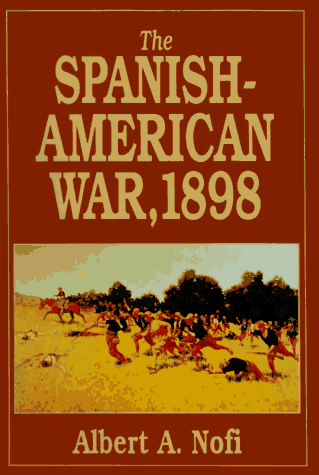Great campaigns
2 total works
The Spanish American War of 1898 is often viewed as a disjointed series of colorful episodes; young Americans who would later become famous, fighting a Spanish colonial army putting up a token resistance. Military commentator and historian Albert A. Nofi presents the war as a coherent military narrative, showing the confluence of the American command's Civil War experience and recent developments in technology. Serious attention is also given to the Spanish forces, the army of an empire in decline, but well-equipped and tactically sophisticated. Detailed coverage is given of both American and Spanish aims, assumptions and strategy. The author's colorful narrative is supplemented by 50 illustrations, most of which have not appeared in print since the era of the war. Specially commissioned maps highlight the most tactically significant land and naval engagements, such as the Spanish defense of El Caney and the Spanish fleet's dramatic but futile attempt to break out of Santiago harbor. Military operations are placed in the context of a growing American nation in a wider world, 35 years after the Civil War.
The Spanish American War features a detailed treatment of the war in Puerto Rico. This theater was under the command of Indian fighter Nelson A. Miles and included some of the best tactical maneuvering of the war. The Puerto Rican aspect has not been covered in detail in modern works. Albert Nofi has made use of works covering the Spanish that have not been widely used in English-language works, as well as American eyewitness accounts that have not been examined in nearly a century.
The Spanish American War features a detailed treatment of the war in Puerto Rico. This theater was under the command of Indian fighter Nelson A. Miles and included some of the best tactical maneuvering of the war. The Puerto Rican aspect has not been covered in detail in modern works. Albert Nofi has made use of works covering the Spanish that have not been widely used in English-language works, as well as American eyewitness accounts that have not been examined in nearly a century.
It was the bloodiest battle of the bloodiest war in American history. It was the "high tide" of the Confederacy. At Gettysburg men fought in places that speak of the firm nature of their combat: Devils Den, the Slaughter Pen, the Valley of Death. Others sound more innocuous, that Wheat Field, the Peach Orchard, Little Round Top - but these too resound with the life and death struggle of brutal war. It was at Gettysburg that three days decided a war and changed the future of a nation. The Gettysburg Campaign is a revised edition of one of the best histories of the events that led to, culminated in, and followed the epic battle of Gettysburg. The story begins with the grand cavalry battles and skirmishes that marked the beginning of Lee's epic invasion of the North. Historian Albert A. Nofi follows the pattern of events that led both armies to the crossroads town of Gettysburg where the terrible whirlwind of battle intensified. The awful second day of the fight is presented in grim detail with a complete accounting of savage thrust and counterthrust. The book investigates the planning that led to the panoramic charge of General Pickett's command which ended in disaster. Finally there is the grim march from the battlefield as the Confederates retreated to Virginia timidly pursued by the victorious Federals.Supplementing the telling narrative are informative and descriptive sidebars giving nuts-and-bolts information about the battle. These cover in detail such topics as strategy, tactics, logistics, and personalities giving the reader a comprehensive perception of one of the greatest events in American history. Maps cover the movements of armies to Gettysburg and the tactical ploys for each day of the battle. The Gettysburg Campaign has been reedited and redesigned to include more sidebars, a complete order of battle with strength data, and new pictures. It improves a book that has already been noted as a "must read" for anyone interested in the battle of Gettysburg and the Civil War.

